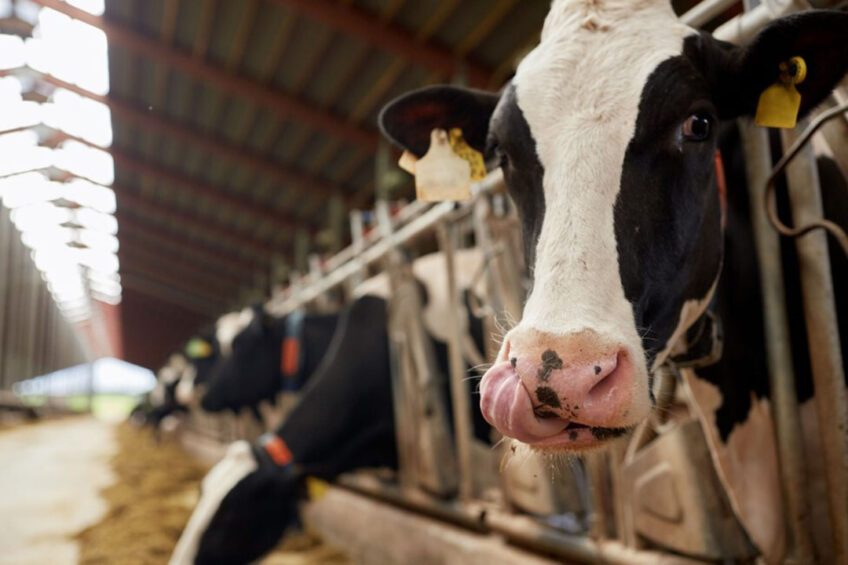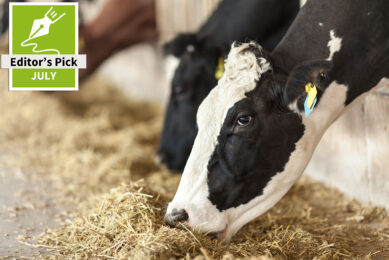“Bovaer is a game changer for dairy farming”

DSM is a major player in vitamins and minerals – a steadily growing market. The company is growing faster in other additives, such as the launched methane-inhibitor, Bovaer. DSM expects to grow even more in biomarkers that signal diseases before they break out and in the targeted approach to specific pathogens through food.
“Dairy farming is completely different from 5 years ago,” says Julien Martin, senior marketing director ruminants at DSM Animal Nutrition & Health. “In terms of yields, things are going well. Milk is now available in supermarkets for a higher price than Coca-Cola. The sector is, however, under a magnifying glass. Just look at what is happening in New Zealand, where dairy farmers get a levy on their CO2 footprint.”
It’s an excellent opportunity for you, being a methane inhibitor supplier.
“Certainly, but the New Zealanders are also testing other solutions. We do expect Bovaer to become a key contributor. We are not going for a niche market. The entire sector must reduce CO2. If 2% of livestock farmers do something, it does not count. Not all dairy farmers will use Bovaer. The emission also depends on other factors. But with a 30-50% reduction in methane emissions, Bovaer can be a valuable tool for many.”
What are the costs?
“Roughly 1 cent per litre of milk; € 80-90 per cow per year.”
You say 1 cent per litre for now. Is that going to change?
“Yes. Third parties currently still produce Bovaer for us. We can hardly keep up with the rapidly increasing demand. We are building a plant in Scotland specially equipped for Bovaer production. It will be fully operational in 2025. We then foresee the price being between € 50 and € 55 per cow per year.”
We are shifting from a product-driven to a customer-driven company.
How many cows will be on Bovaer in 5 years?
“I am not allowed to comment on that, as we are a listed company. Globally, there are approximately 65 million high-yielding cows, most of which are supplemented with high-energy products. That is the potential target group. Given our investments, it will be clear that we are not aiming for 1 or 2 million cows.”
If you get 10-15% of that number of cows on Bovaer, that means a turnover of about € 400 million per year, while the whole of DSM Animal Nutrition & Health now does € 3.5 billion!
[Laughing]: “Again, I am not allowed to comment on that. But Bovaer is a game changer, both for dairy farming and DSM.”
Is DSM moving further away from vitamins and minerals?
“No, we certainly are not. They are accepted and valued feed additives. They are and will remain important to us. That market will grow in volume with the worldwide livestock, say 1.5-2% per year. Turnover in euros will grow faster. We are shifting from a product-driven to a customer-driven company. What do customers want in terms of nutrition and animal health, and what problems do they want to solve? We invest heavily in gut health, in the microbiome. We have already made many introductions to poultry, and we are working on pigs. There is much more to come in cattle, partly based on yeasts and herbs.”
One of your researchers mentioned during the DSM Global Ruminant Days: ‘We found interesting results on how the use of herbs affects nitrogen emissions’. Are you also going to solve the nitrogen emission problem?
“There is not a single topic that we have not researched. Nitrogen is a major issue in cattle and other ruminants. So yes, we are also working on that.”
What else are you researching?
“Our Animal Health & Nutrition division focuses on improving the efficacy of nutrients, improving animal health and reducing emissions. We are modulating the microbiome, that is, adjusting the intestinal flora, via ‘smart sugars’. That is the way to go. We aim to target for precision. For example, for tackling a specific Escherichia coli or a specific coccidiosis. That is what our research focuses on.
“We look for products that are much better than the existing ones. Innovation is not about 5% better. A few percent improvement is not enough; we will not win any markets with that. We only want to introduce something if we can really be effective.”
Will there be more substantial changes?
“The most significant changes are in our Precision Services –digital techniques that change the way we farm, biomarkers that predict diseases before they break out, based on non-invasive techniques: blood, milk and saliva. Working with milk or saliva is easy and not an issue for society.”
Will you remain B2B, or will you focus more on the farmer?
“Cooperatives and integrations bring knowledge to the farmer more easily than we ever could. Our interest is to know exactly what the end user needs. If we know that, we can deliver it, but we do not have to do it directly. We must first offer the farmers a return, which is and will remain the basis. Then, and in doing so, spare the environment and help protect our industries. The links in the chain must communicate better.











